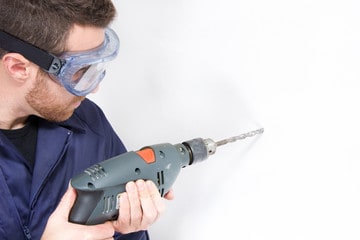When you buy a drill, its voltage is an important factor. Because RPM depends on the voltage of the drill. There are few voltage classes available in a brand in order to provide different user experiences. So let’s see the difference between 12V vs 18V drills in detail. This guide includes all the differences, pros, and cons in detail.
Using a higher or lower voltage tool is not a good solution every time. So let’s see, what are the differences and other factors between the 12V and 18V drills?
What is a 12V Drill?
A 12V drill is a power tool that uses a 12-volt cordless power source. 12V drills are powered by the rechargeable lithium-ion battery. Many 12V drill models include a 3/8-inch or 1/2-inch chuck which can accommodate a wide range of drill bit sizes. The drill speed is typically adjustable, with many models offering speeds of up to 1,500 to 1,800 RPM. The weight of a 12V drill varies depending on the specific model and the battery that it uses, but generally, they tends to weigh between 2 to 5 pounds.
Due to its light weight, it allows to use in a variety of locations without the need for a constant power source. 12V drills are easy to manoeuvre and less likely to cause user fatigue during extended use. In terms of power consumption, a 12V drill is relatively efficient due to its battery technology. 12V drill is ideal for light to medium tasks. While it may not have as much power as its higher voltage counterparts, it’s perfect for home use, including tasks like hanging pictures, assembling furniture, and other DIY projects.
What is an 18V Drill?
An 18V drill is a power tool that is powered up by an 18-volt cordless Li-Ion drill battery. Unlike the 12V drills described above, 18V drills offer more power, making them suitable for heavy-duty tasks such as drilling through harder materials like metal or thicker wood. Most of the 18V models come furnished with a 1/2-inch chuck to accommodate larger drill bit sizes for heavier duties. 18V drills consist of 1,800 to 2,000 RPM speed. The weight of an 18V drill is between 3 to 6 pounds.
This compact nature of an 18V drill aids in providing comfortable handling, but they may be slightly heavier than the lighter 12V models, potentially leading to more user fatigue with prolonged usage. 18V drills consume more power due to their higher voltage and thus might require more frequent battery recharges depending on the tasks. 18V drills are with its high power and performance capabilities. hence these are more suitable for heavy-duty tasks often associated with professional construction and carpentry.
What are the Differences Between 12V and 18V Drills?
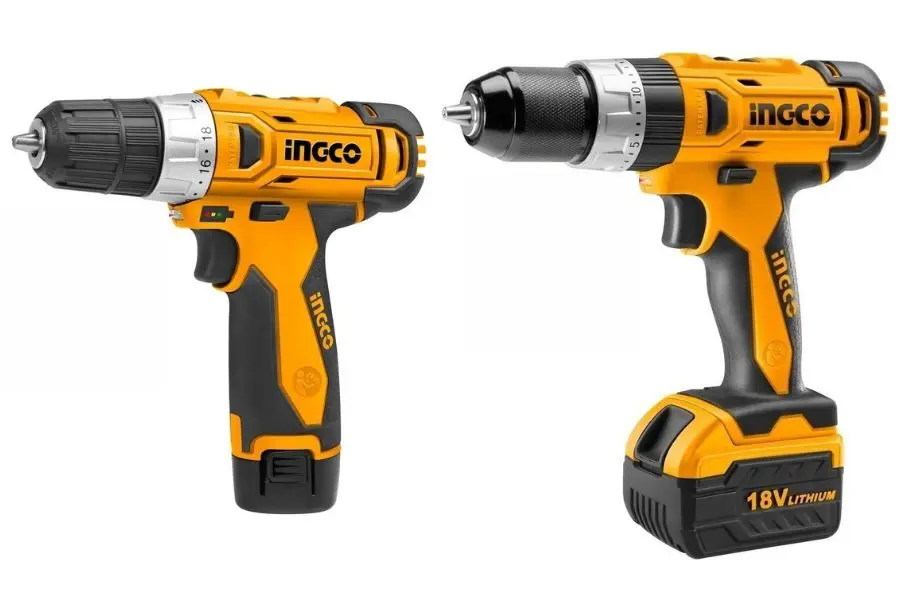
1. Performance Differences Between 12V and 18V Drill
12V, and 18V drills are cordless. Hence these are powered by Li-Ion batteries. Normally, a 12V, 3Amh drill has a 36W of power capacity and same capacity 18V drill have a 54W power capacity. There fore 18V drill is more powerful than the 12V drill.
Power is usually measured by the Watt-hour. So you can find power for your drill battery by multiplying the voltage and ampere-hours of the battery.
Normally drill batteries are Li-Ion, and some are Ni-Cd. Most Li-Ion batteries are durable when used properly. At first, we can consider the power supply with voltage. The capacity of the battery is measured by the voltage and amperes. So capacity is the measurement of working time. A higher-capacity battery has a long run than a lower-capacity battery.
When the capacity is high, the tool can be used for a long time. When you are going to buy it, you should consider this. If you need a long-run tool, 18V is the best solution. But more than that, there are factors you should consider. Let’s see what they are.
I will show you the result of test drilling 2″ Oakwood using Milwaukee 12V and 18V batteries until the battery is empty.
| 12V | 18V | |
| Milwaukee | 46 holes | 59 holes |
- 18V has more power capacity than 12V
2. Efficiency Differences Between 12V and 18V Drill
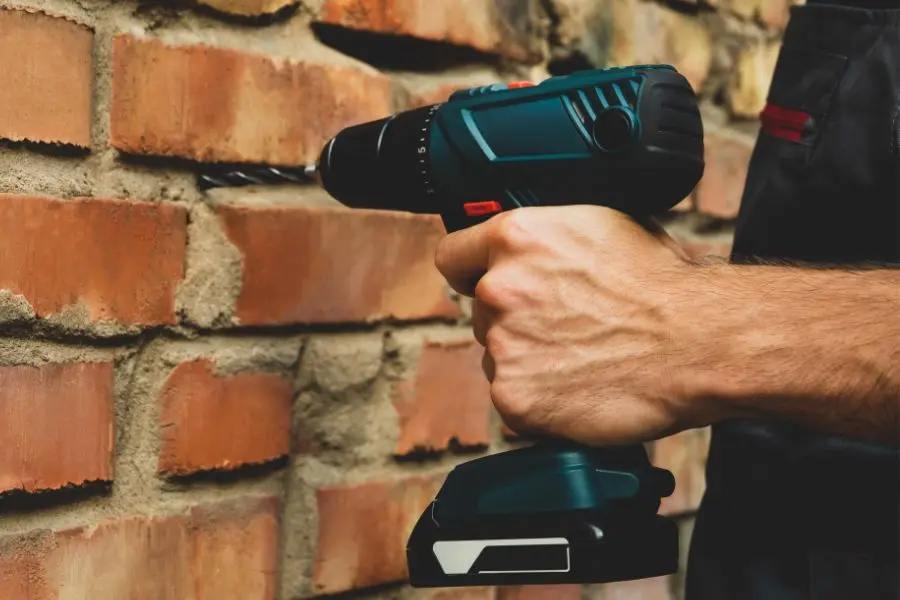
When we consider a machine, efficiency is the most important. This is a measurement of the power output of the input power. 12V vs 18V drills are different in efficiency. You can observe it using below testing.
Testing is conducted by measuring how much time it will take to drive 10 screwdrivers with 2 1/2″length using Dewalt impact driver and drill driver using 12V and 18V batteries.
Check the result!
| 12V | 18V | |
| Drill Driver (combi) | 71 Sec | 48 Sec |
| Impact Driver | 54 Sec | 52 Sec |
When you carefully check this table, you can always observe high voltage can do an amazing job. When you use any kind of tool relevant to this category, you can have this kind of result. So you can have real efficiency when using the 18V drill.
- 18V is more efficient than 12V
3. Drill Size and Weight Differences Between 12V and 18V Drill
Normally 18V tool weight is 4 – 6lbs, and the 12V tool weight is 3 – 5lbs with a battery pack. But most sizes are equally the same. Because of these, you should select the right tool that is compatible with your job.
When you use a power tool, size and weight are more important. That is a measurement of user comfortability. If the tool is heavier and bigger, you are not able to handle that easily.
If you are doing a woodworking job, you will need lightweight tools with fewer sizes. The reason is handling them easily. Sometimes you may need to carry that to the top of the roof. So size and weight is a more critical factor.
But consider the DIY projects; you will need a combined mechanisms tool such as a drill driver. Those tools are bit weight with considering the same power single mechanism tool. So it is essential to use more option tools for the DIY.
- 18V is more weight than 12V drill driver
4. Usage Differences Between 12V and 18V Drill
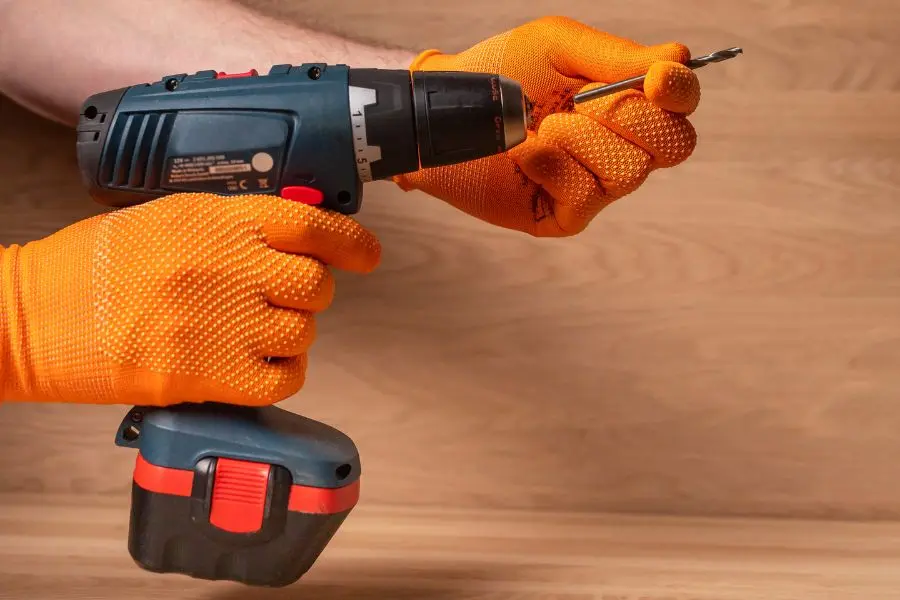
When we use 12V drill and 18V drill, we should consider the user experience. User experience depends on the weight, size, purpose, battery capacity, charging time, etc.
If the tool handling is easy, there is a positive user experience. And if tool handling is difficult and it pains you, that is negative.
If you are a roof builder, you will need a lightweight tool with more capacity. But if you are doing DIY projects, weight is not an essential factor. Because of these factors, you should select the best tool for your purpose.
| Task | Suitable tool |
| Drive screws or drill-less than 3/8″ | 12V Drill driver |
| Drive screws or drill more than 1/2″ | 18V Drill driver |
| Drill concrete, masonry, Bricks | 18VDrills |
| Drill wood | 12V Drill |
| Drill metal | 18V Drill |
As well as the battery capacity is another factor for usage. If the battery capacity is always continuously low, you have to charge it, or you will need an extra battery for that. So that is not suitable for use.
- 12 V is easier to handle than 18V
5. Drill Battery Charging Time Differences Between 12V and 18V Drill
Nowadays, charging time has been reduced with new technology. There are chargers such as rapid chargers, fast chargers, and standard chargers.
If you are using a rapid charger, you can charge your battery in less than 15min for the fast chargers, and it is less than 30 min. Using a standard charger will take more than hours.
Each tool uses different technology. Therefore charging time depends on the charger capacity and battery capacity.
You should charge a battery 10-85% for the maximum lifetime. So you will have to remain less time than its recommended charging time.
Read more about How Long Does It Take to Charge a Cordless Drill Battery?
- 12V batteries will charge less than 18V batteries.
6. Drill Bits Differences Between 12V and 18V Drill
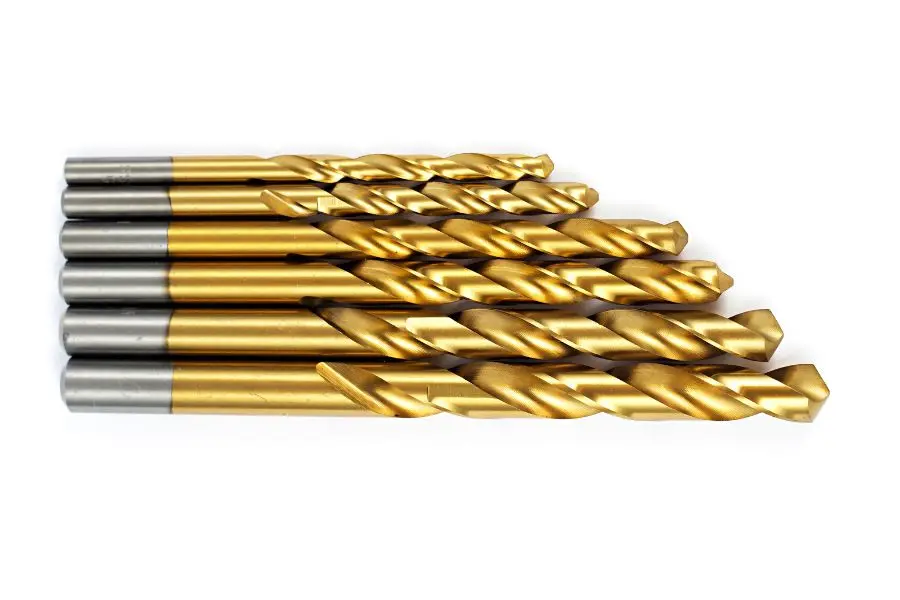
Drill bits are used for drilling wood, metal, concrete, etc. The diameter of the drill bit is a measurement of the power of the tool because the drill bit is designed to hold the torsion. When you are drilling or driving, you need torque for the work. The torque generates the torsion.
In order to resist, the torsion tool should have a larger diameter. Due to this reason, there are various diameters. Mostly there are 3/8″ (10mm) and 1/2″ (13mm).
When the tool is more powerful, it generates higher torque and torsion. Hence in 18V drill use 1/2″ drill bits.
Most 12V drills use a 3/8″ drill bit.
- 3/8″ drill bits are good for 12V drill and 1/2″ drill bits are good for 18V drill
Is 12V Drill Essential?
Yes, a 12V drill is essential, although you have an 18V drill. Because 12V drills are lighter than 18V drills, hence it can be used in smaller spaces with less fatigue. Also, 12V drills consume less power than 18V drills, 12 drill batteries can charge faster than 18V due to lower capacity, and 12V drills are always more inexpensive than 18V drills. Due to these facts, you should always have 12V drills.

